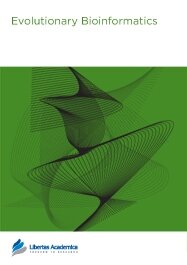

Publication Date: 10 Oct 2011
Type: Original Research
Journal: Evolutionary Bioinformatics
doi: 10.4137/EBO.S7931

Machine learning techniques have been widely applied to solve the problem of predicting protein secondary structure from the amino acid sequence. They have gained substantial success in this research area. Many methods have been used including k-Nearest Neighbors (k-NNs), Hidden Markov Models (HMMs), Artificial Neural Networks (ANNs) and Support Vector Machines (SVMs), which have attracted attention recently. Today, the main goal remains to improve the prediction quality of the secondary structure elements. The prediction accuracy has been continuously improved over the years, especially by using hybrid or ensemble methods and incorporating evolutionary information in the form of profiles extracted from alignments of multiple homologous sequences. In this paper, we investigate how best to combine k-NNs, ANNs and Multi-class SVMs (M-SVMs) to improve secondary structure prediction of globular proteins. An ensemble method which combines the outputs of two feed-forward ANNs, k-NN and three M-SVM classifiers has been applied. Ensemble members are combined using two variants of majority voting rule. An heuristic based filter has also been applied to refine the prediction. To investigate how much improvement the general ensemble method can give rather than the individual classifiers that make up the ensemble, we have experimented with the proposed system on the two widely used benchmark datasets RS126 and CB513 using cross-validation tests by including PSI-BLAST position-specific scoring matrix (PSSM) profiles as inputs. The experimental results reveal that the proposed system yields significant performance gains when compared with the best individual classifier.
PDF (743.56 KB PDF FORMAT)
RIS citation (ENDNOTE, REFERENCE MANAGER, PROCITE, REFWORKS)
BibTex citation (BIBDESK, LATEX)
XML
PMC HTML
This is the fastest progress we have experienced from submission to acceptance. Reviews are fast, pertinent, and instructive. Every step of the process is visible and prompt, and every email is friendly and immediate. In all, it is an excellent experience to be published in Libertas Academica.

All authors are surveyed after their articles are published. Authors are asked to rate their experience in a variety of areas, and their responses help us to monitor our performance. Presented here are their responses in some key areas. No 'poor' or 'very poor' responses were received; these are represented in the 'other' category.See Our Results
Copyright © 2013 Libertas Academica Ltd (except open access articles and accompanying metadata and supplementary files.)
FacebookGoogle+Twitter
PinterestTumblrYouTube